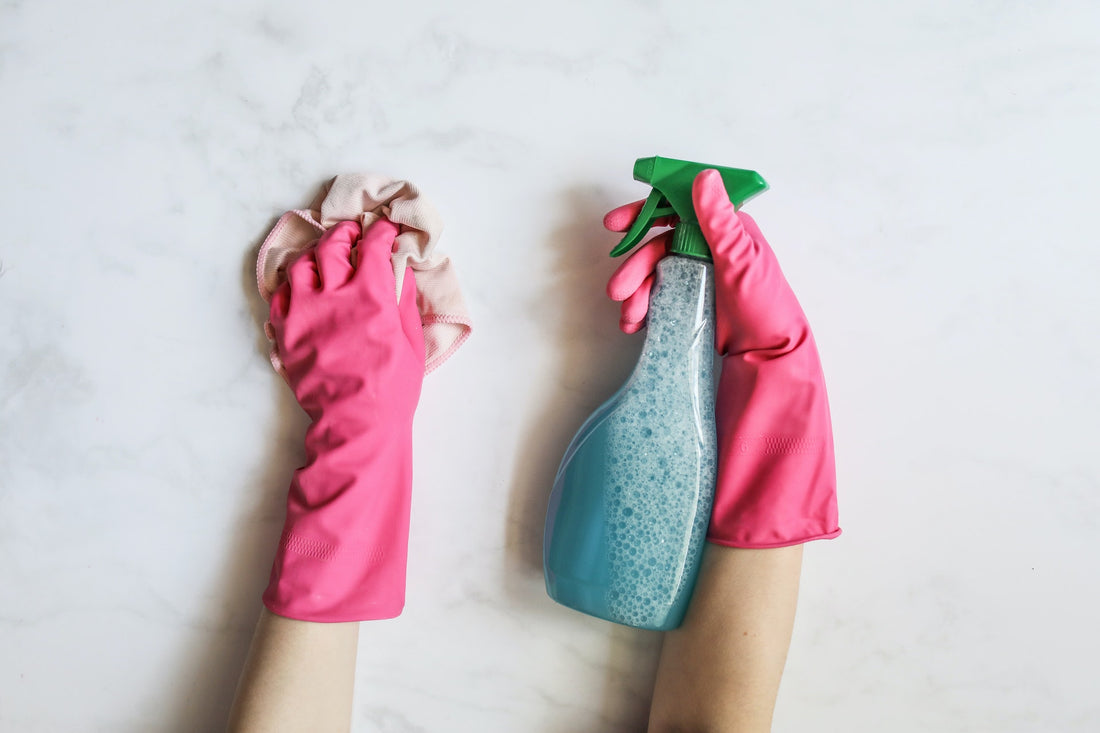
Common Household Toxins to Avoid
Share
Our homes are often our sanctuary, but did you know that there are common household toxins that can silently harm our health, weaken our immune system, and increase our risks of cancer and other diseases? From the air we breathe to the products we use for cleaning and personal care, our daily choices impact our well-being. And often, these common household toxins are hiding in areas of our home that we would never think could endanger us!
6 Common Household Toxins to Avoid
1. Air Fresheners
 Many air fresheners can contain phthalates, which are hormone-disrupting chemicals that can affect reproductive health. And that’s just the tip of the proverbial (scented) iceberg.
Many air fresheners can contain phthalates, which are hormone-disrupting chemicals that can affect reproductive health. And that’s just the tip of the proverbial (scented) iceberg.
“Air fresheners can impact indoor air quality by adding potentially hazardous pollutants to the air,” warn the University of Massachusetts. “The use of air fresheners is associated with elevated levels of volatile organic compounds (VOCs), such as formaldehyde, acetaldehyde, benzene, toluene, ethyl benzene, and xylenes, in indoor air. These VOCs are often difficult to smell in the air, but they can irritate the eyes, nose, and throat, as well as cause headaches and nausea.”
The problem is that it’s almost impossible to tell if a commercially prepared air freshener has anything problematic in it. “The types and amounts of VOCs emitted depend primarily on the fragrance composition of the air freshener, not on the type of air freshener,” explains the university. “It can be difficult or impossible to find out the ingredients in air fresheners, because manufacturers are not required to disclose the complete list of ingredients.”
Instead, try using natural options such as essential oils or open windows for ventilation. If you want to make your own essential oil air freshener, try this:
- 1 cup distilled water
- 2 tablespoons vodka or rubbing alcohol (acts as an emulsifier and helps the scent disperse)
- 10-15 drops of your favorite essential oils (such as lavender, lemon, eucalyptus, or peppermint)
- A small spray bottle
Start by thoroughly cleaning and drying the spray bottle to ensure it’s free from any residue or impurities.
Pour the distilled water into the spray bottle, leaving a little space at the top to add the other ingredients.
Add the vodka or rubbing alcohol to the bottle. This helps to blend the essential oils with the water and also acts as a preservative.
Choose your desired essential oils and add 10-15 drops to the spray bottle. You can use a single oil or create your own unique blend. Experiment with different scents to find your favorite combination.
Close the spray bottle tightly and shake it well to mix all the ingredients together.
Your essential oil air freshener is now ready to use. Spray it around your home, office, or any other space you want to freshen up. Remember to shake the bottle before each use to ensure the oils are evenly distributed.
Note: Avoid spraying the mixture directly onto fabrics or delicate surfaces, as some essential oils may stain. It’s always a good idea to test a small, inconspicuous area before using the air freshener on a larger scale.
Enjoy the delightful aromas and the natural freshness provided by your homemade essential oil air freshener!
2. Cleaning Products
Many conventional cleaning products contain harmful chemicals such as chlorine and ammonia, which can irritate the skin, eyes, and respiratory system. A lot of commercial cleaning products, such as laundry detergent, contain scents and fragrances that present the same health hazards we noted above.
For a healthier alternative, look for plant-based, unscented and biodegradable options to reduce exposure to toxins.
3. Plastics
Plastic products, such as food containers, water bottles, and toys, contain BPA or BPS, which are hormone-disrupting chemicals that can mimic estrogen in the body. Try to use glass or stainless steel containers and avoid heating food or drinks in plastic.
4. Pesticides
Pesticides used in and around the home can contain harmful chemicals such as organophosphates and carbamates, which can affect the nervous system. A healthier alternative: Use natural pest control methods such as bug traps and essential oils, or seek out eco-friendly pest control services.
5. Personal Care Products
Many personal care products such as shampoo, lotion, and makeup contain phthalates, parabens, and synthetic fragrances, which can negatively impact our hormones and overall health. Look for organic and natural options or make your own with simple ingredients such as coconut oil and essential oils.
6. Pots, Pans and Other Cookware
 Nonstick pots and pans save a lot of time in the kitchen, but up until 2013, many of these products were made with perfluorooctanoic acid (PFOA). This chemical is linked with a range of worrisome health problems, such as infertility and even liver disease and kidney disease. Additionally, when nonstick cookware is used in high-heat settings, such as baking or stir frying, the coating begins to break down and releases toxic chemicals into the air.
Nonstick pots and pans save a lot of time in the kitchen, but up until 2013, many of these products were made with perfluorooctanoic acid (PFOA). This chemical is linked with a range of worrisome health problems, such as infertility and even liver disease and kidney disease. Additionally, when nonstick cookware is used in high-heat settings, such as baking or stir frying, the coating begins to break down and releases toxic chemicals into the air.
“As a safe alternative, stainless steel, ceramic, glass, and cast-iron pots and pans are the go-to materials to avoid risky ingredients seeping into your food,” suggests the culinary experts at Food & Wine magazine. “When shopping for the best non-toxic cookware, look for pieces that are free from PFAs (per- and poly-fluoroalkyl substances). This is a substance that is commonly found in many Teflon and nonstick pans sold nationwide and is thought to be dangerous when consumed in large quantities.”
Reducing our exposure to common household toxins can be an important step towards protecting our health. By making simple changes such as using natural air fresheners, choosing plant-based cleaning products, avoiding plastic, using natural pest control methods, and using natural personal care products, we can significantly reduce our exposure. Remember, small changes can make a big difference to our health and the environment.
References:
- https://ehs.umass.edu/air-fresheners-and-indoor-air-quality
- https://pubmed.ncbi.nlm.nih.gov/32950793/
- https://pubmed.ncbi.nlm.nih.gov/28913736/
- https://www.foodandwine.com/lifestyle/kitchen/best-non-toxic-cookware
